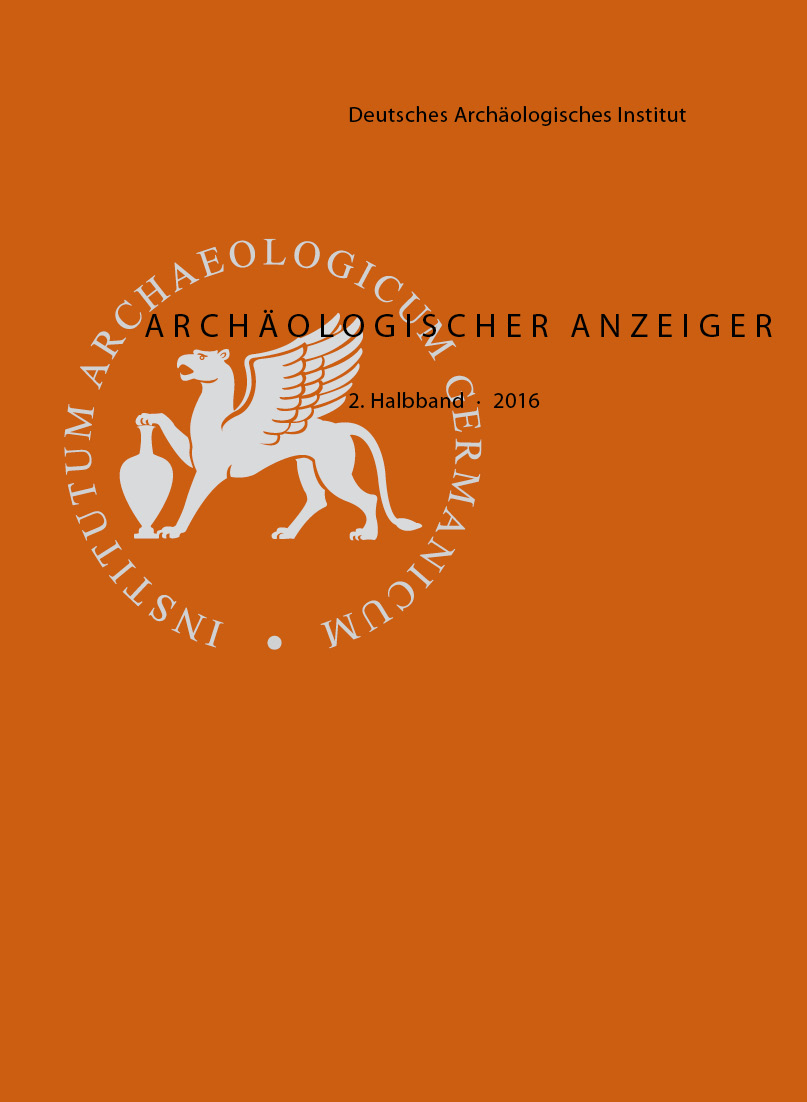Pergamon – Report on the Projects of the 2015 Campaign
https://doi.org/10.34780/tm61-7460
Abstract
The projects of the Pergamon Excavation in 2015 concentrated on investigations in the Hellenistic royal city and the surrounding area as part of the current research programme. The conclusion of excavation work in a presumed banquet house in the north section of the east slope brought to a close a project spanning several years and examining natural sanctuaries and their infrastructural facilities. In the main room of the building, wall decoration in what is known as the masonry style or the eastern First Style is preserved in astonishingly good condition. Thanks to stratigraphic excavations in construction and decor layers, the decoration has been dated to the 1st cent. B.C. and is thus an important monument testifying to architectural and decorative history in the transition from the Hellenistic to the Roman epoch. Ongoing investigations at the Lower Agora have revealed much new evidence on use and reuse primarily in the imperial period, late antiquity and Byzantine times. Architectural analysis has yielded new data for the reconstruction of the colonnaded halls. Geophysical prospecting on the monumental tumulus Yiğma Tepe continued, using a wide spectrum of methods. In particular, a number of anomalies were observed on the summit which suggest that excavations there could be profitable. Resumption of excavations on the tumulus after more than 100 years has brought to light surprising data on the mound’s organization and structuring and on the frequentation of the monument from the 1st cent. B.C. onwards. As part of the survey project on the harbour network of the Kane peninsula, the situation regarding data on the city of Kane itself has been substantially improved again, so that we now have a relatively clear idea of the course of the city wall, and the site and extent of the harbour. In addition several Roman building structures, among them a Roman villa marittima, have been examined. Geoarchaeological investigations have confirmed that the urban area of Kane was originally an island, allowing the identification of the third Arginusae island. A promising pollen profile from a crater lake in the interior of the Kara Dağ peninsula is still being analysed. In the Red Hall, conservation of the vaulted substructure was completed and site consolidation towards the river Selinus is now well advanced. In the gymnasium, stabilization of the rear wall of the Odeon has been completed and work continued on the anastylosis of the south-west portico corner of the large palaestra.
Keywords:
Pergamon, banquet house, masonry style, Lower Agora, Yiğma Tepe, monumental tumulus, geophysics, Kane, Arginusae, villa marittima, anthropology, dendrochronology, Red Hall, gymnasium





